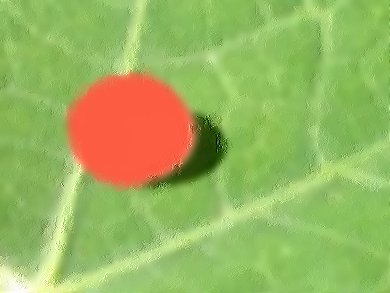Are excreted nanomedicines adsorbed by the cellulose in plants, which in turn might be consumed by animals or bacteria? Ming Zhang and Mustafa Akbulut, Texas A&M University, USA, investigated the adsorption, desorption, and removal behavior of polyethylene glycol-based nanoparticulate drug delivery systems on and from cellulose. Polyethylene glycol is commonly used in nanomedicine because it is one of the few polymer nanoparticles with Food & Drug Administration approval.
They found that such an adsorption process is only partially reversible. Most of the adsorbate particles do not desorb from the cellulose surface even upon rinsing with a large amount of water. The rate constant of adsorption decreases with increasing particle size.
That smaller particles adsorb better onto cellulose and larger particles slough off more readily does not necessarily mean that nanomedicines should have a larger particle size. Only particles around 300 nm in diameter or smaller can be absorbed by our bodies and used in medicine.
- Adsorption, Desorption, and Removal of Polymeric Nanomedicine on and from Cellulose Surfaces: Effect of Size,
Ming Zhang, Mustafa Akbulut,
Langmuir 2011, Just Accepted Manuscript
DOI: 10.1021/la202287k



